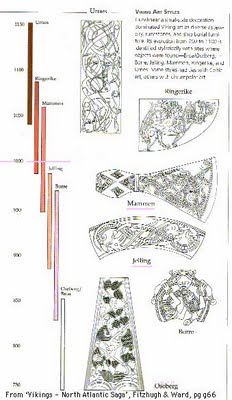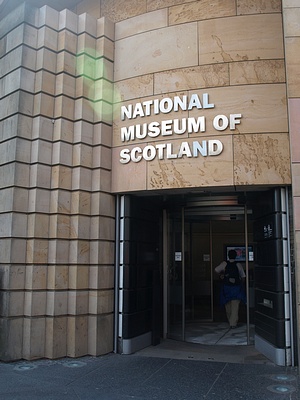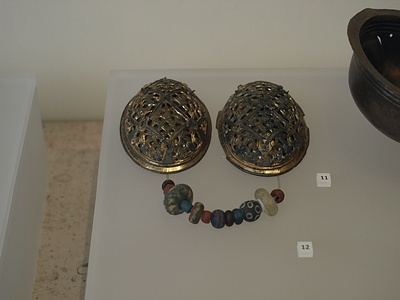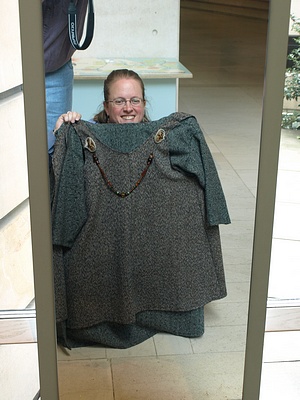This past weekend at the SCA's Trillium War event, DARC set up two experiments. I'm sure that Darrell will post about the new smelter. This post is about the bead furnace.
Last Fall we made up a "Mark I" furnace and tried making some beads. The report is
here. This year we created the "Mark II" and burned it on June 14th (along with the smelt) and this last weekend.
I'll add some reports later, but here is a quick summary. For those who need the background...
The Vikings not only loved beads, it is pretty clear that they made them. At Ribe in Denmark, they found a number of what appear to be bases for bead making furnaces, along with the usual debris that makes us fairly sure that it was indeed bead making going on - broken glass beads, tesserae, crucibles, stringers, and so on.
This is the second furnace we have made in this experiment series. Its' base pretty closely matches the size of the bases from Ribe.

As you can see, this was set up with the bellows on one side, with two operators on the other side. Additional openings exist on the bellows side for adding charcoal and crucibles.
Aside from one minor experiment with a crucible and pulling a stringer we focused on making beads. Two main techniques were employed - the usual lampworking technique employing glass rods; and an attempt to build up beads using an artefact similar to the warming plate from Ribe.
We welcomed a number of visitors who had the chance (after serving a shift on the bellows) to make a couple of beads.
This is the first day's results.
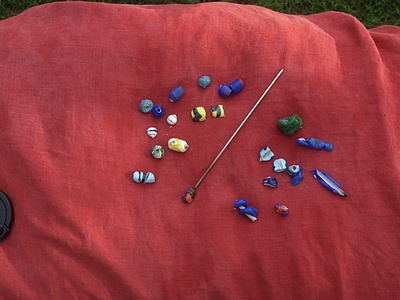
And some of the second day's results.
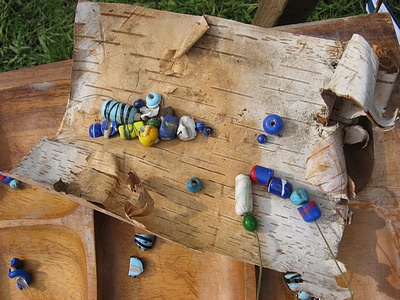
Some quick notes:
The first day we had a pretty rough breakage rate. Beads either broke coming off the mandrils, or broke in the annealing pot. 6 of about 25 survived.
On the second day, I think we had better luck but I was so busy talking to people about the beads and furnace that I didn't keep notes on bead numbers. I would estimate 50% survived.
Clearly, annealing and the mandrils are areas we are going to have to work on.
We also had a significant problem with ash speckling the bead surfaces. Interestingly, this makes them look like many of the beads on Dan Carlson's bead CD. I'm not sure whether the surface texturing of the Gotland beads is a result of ash or if it had another source. Beads from other locations do not necessarily show this texture.
The technique of picking up glass fragments from a "warming plate" inside the furnace to make your beads was reasonably successful -- at least in creating the beads.
On day three, the furnace broke as we started to clean up. A shame, but hardly a real problem - we'll make a new one. The breakage, however, provided an opportunity to both examine the structure and discuss improvements. The "Mark III" will be produced in the next few weeks and we'll see what happens.
The best part of the breakage was when we cleared the walls away to see the base. I'll compare these photos to the archaeological reports from Ribe in a later post.


Look for the reports soon!
Neil
Labels: artefacts, glass beads
